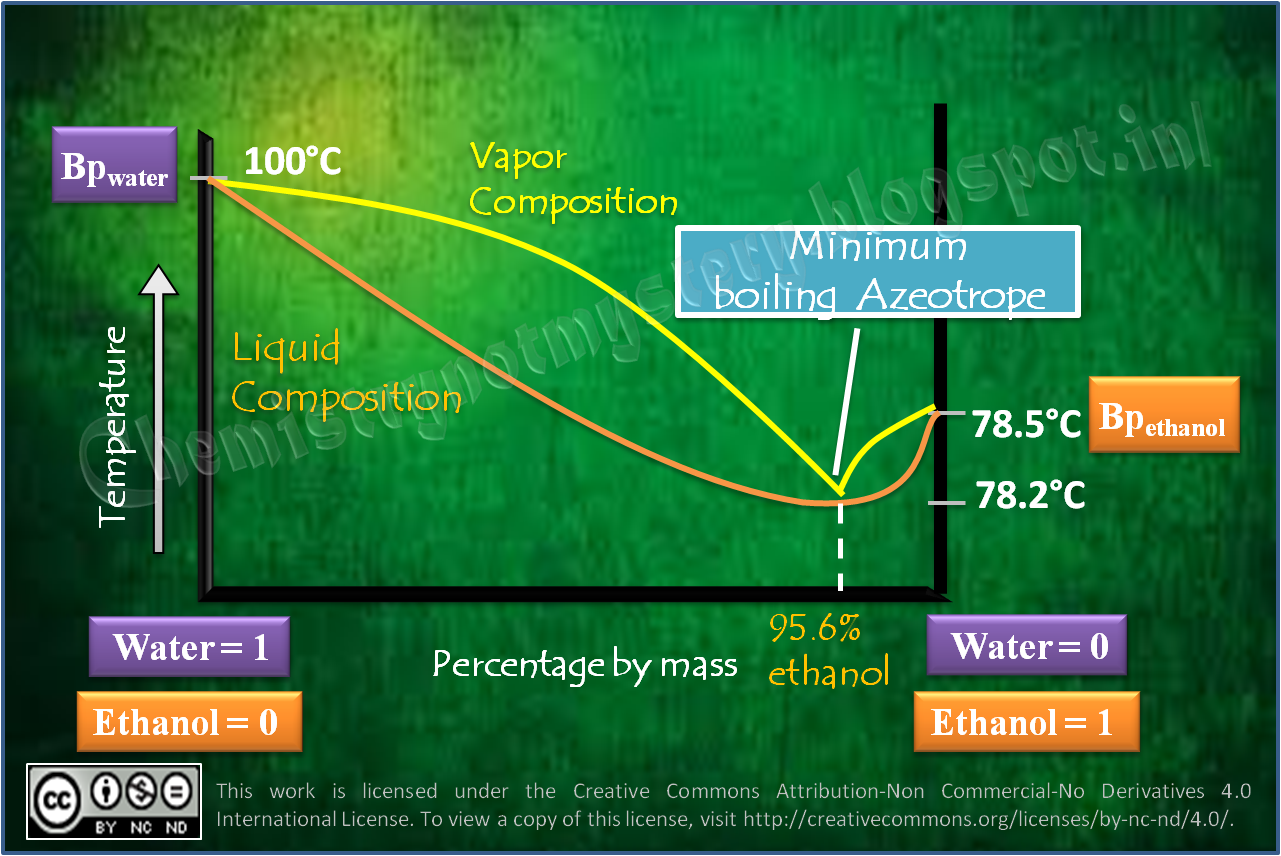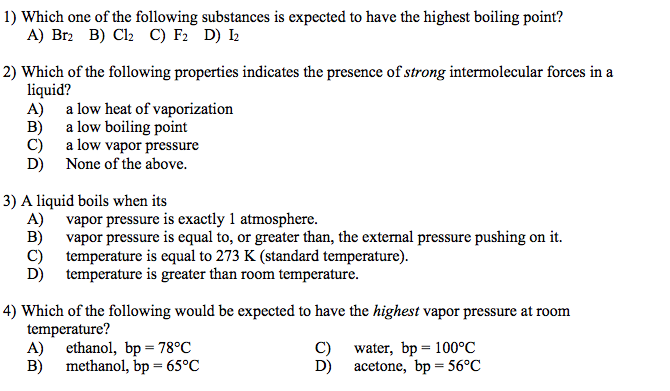
HCl is more polar, but the increased mass of HBr gives it a higher boiling point.īoth are nonpolar, but I 2 has more mass and it is more polarizable (stronger intermolecular forces), so it will have the higher boiling point.īoth have about the same molecular weight, but HF is very polar, so HF has the higher boiling point.Īssume that liquid ammonia, NH 3, has a specific heat of 4.75 J/g-C and that gaseous ammonia has a specific heat of 2.17 J/g-C. In this case the mass effect is greater than the polarity effect. According to polarity AsH 3 should boil at a lower temperature, but according to mass PH 3 should boil at a lower temperature. PH 3 is more polar (P is closer to F) and AsH 3 has more mass. In this case the effect of polarity is greater than the effect of mass. According to mass ammonia, NH 3, should be easier to boil (but it isn't).

Rationalize the difference in boiling points between the members of the following pairs of substances (be sure to include all considerations):Īccording to polarity the more polar ammonia, NH 3, should be harder to boil (which it is). (d) No molecules, so there are no intermolecular forces - Ionic bonds. Hydrogen bonds form when hydrogen is covalently bonded to N, O, or F. (c) Very polar - Hydrogen bonds between the molecules. (b) Polar - Dipole-dipole attractions (and dispersion forces). What kind of attractive forces must be overcome to (a) sublime At 2 (b) vaporize C 2H 5F (c) boil hydrogen fluoride, HF (d) melt LiBr? Explain. (b) H 2S, S is more electronegative and will make the molecule more polar. (a) I 2, it is the largest nonpolar molecule. Which of the following materials is likely to have (a) no dipole-dipole forces, but the largest London dispersion forces, (b) the largest dipole-dipole intermolecular forces: I 2, He, H 2S, H 2Te. The ethylene glycol can form hydrogen bonds on both ends of the molecule resulting in much stronger intermolecular forces and a higher boiling point. The masses are similar, so why is the boiling point of ethylene glycol so much higher than the boiling point of propanol? Replacing the end CH 3 with an OH gives ethylene glycol, HOCH 2CH 2OH, which has a boiling point of 197 ☌. Propanol, CH 3CH 2CH 2OH, has a boiling point of 97 ☌. Both of these will contribute to a higher boiling point for propanol. Propanol also has more mass and that also requires more energy to move them around and separate them. Propanol is larger and will have more London Dispersion Forces giving it stonger intermolecular forces and requiring more energy to separate the molecules. Which is more polarizable? (a) Cl 2 or I 2, (b) C 2H 6 or C 10H 22?Įthanol, C 2H 5OH, has a boiling point of 78 ☌ while propanol, C 3H 7OH, has a boiling point of 97 ☌. Which will have the strongest dipole (a) F 2 or HF, (b) CH 3Cl or CH 3Br? The electrons have shifted to one side of the molecule. What is meant by a molecule that has a dipole? Intermolecular Forces, Liquids, and Solids (Chapters eleven and twelve) The textbook questions will have additional information that may be useful and that connects the problems to real life applications, many of them in biology. The study guide also has worked out examples. The exercises are worked out examples of the questions at the back of the chapter. You should also study the Exercises within the chapters.

This is just the required list of problems for quiz purposes. Note: You are expected to go to the end of chapter problems in your textbook, find similar questions, and work out those problems as well.

by Brown, LeMay, Bursten, Murphy and Woodward), but any edition of this text will do for this course. The last edition I required students to buy was the 12 th edition (CHEMISTRY The Central Science, 12th ed. The textbook associated with this homework is CHEMISTRY The Central Science by Brown, LeMay, et.al. This page has all of the required homework for the material covered in the first exam of the second semester of General Chemistry. Chem II Homework Exam 1 Chem II Homework Page, Exam 1 Material Homework Page Without Visible Answers


 0 kommentar(er)
0 kommentar(er)
